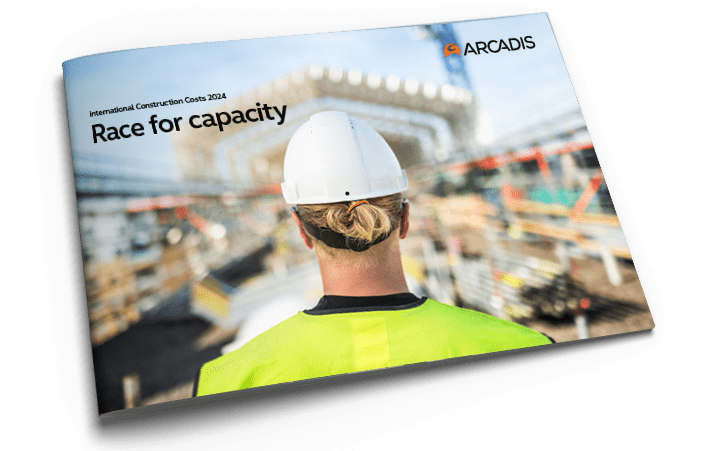The global construction sector is on the cusp of significant changes and challenges as it emerges from the post-pandemic era. Despite weak growth rates in many markets during 2023, the future looks promising, with lower borrowing costs and moderate construction price increases combining to improve prospects for development in many markets.
But is this the case for Australia?
Not that long ago, Australia was relatively isolated from global events. Structural changes, fluctuating market dynamics, conflicts, shifting political sands did not really resonate here. In fact, the only thing that we needed to be concerned with was in connection changes in policy, the cycles of foreign investment, and geopolitical manoeuvres with China.
However, the world has become a much smaller place since we have emerged from the pandemic. Global logistical challenges, the temporary closure of manufacturing facilities worldwide, the blockage of the Suez Canal, fractured supply chains, conflict in Europe (and now the Middle East), a growing demand for skills and labour, increasing cost of living challenges and a housing crisis, and diminishing market capacity – all of these challenges are being felt across nearly all markets and regions with only a few exceptions.
Australia is therefore not as isolated as it once was. Trends and themes that are now playing out overseas - in places such as the Middle East, the UK and the US – are now being replicated here in Australia. But there is often a lag. This presents a great opportunity to see what happens overseas and try and predict what will happen here over the next few years.
What is happening with construction costs globally?
Our International Construction Costs report for 2024 is being released at a critical stage, as economic cycles across the developed world return to growth. The report highlights that sectors that are sensitive to growth rates and finance costs – including housing and commercial development – contracted in many markets during 2023. And with demand for construction falling, markets were relatively calm in 2023, as supply chains returned to an equilibrium state.
Our upcoming report compares construction costs across 100 cities, providing an invaluable insight into current market dynamics. We provide an update on market conditions in 10 major markets, including Australia, highlighting continuing headwinds and sources of growth that will support construction market recovery. Critically however the variation of construction costs across markets including the US, Europe, and Australia remains wide. Differential inflation and exchange rates add complexity to the problem, as does the impact of regulation and client expectation.
Even if the days of double-digit construction inflation are over, this does not mean that the industry's challenges have been resolved. Viability remains an issue in many sectors – and this remains the case in Australia and will do for the foreseeable future. Not only will the cost of finance remain high, but specification enhancements linked to low-carbon performance will also result in increased costs – even if markets remain stable.
One area where demand is soaring is in the technology and advanced manufacturing sector. This is a trend driven by the energy transition and AI's demand for high-end processors and data centre capacity. The surge is reshaping local construction markets, particularly in the US and Northern Europe, placing significant additional demands on labour, materials, and power. The clients behind these programmes face huge challenges in meeting their scheduled Day One completion date. In our report we examine how the high level of risk exposure on these programmes is being compounded by their sheer scale, speed, and complexity.
The impact of sustainability on Australian construction projects
Governments and companies across the world are committing to climate action – and it is the same here in Australia. Nearly everyone has a net zero target.
The goals and commitments that have been made leading up to 2050 may appear to be in the distant future, but we are quickly approaching the point of no return for enabling net zero. In supporting these targets, the global construction industry has performed extremely poorly and has made disappointing progress.
In Australia, buildings account for around 19% of total energy use and 18% of direct carbon emissions. This is why the construction industry is often identified as a key area for investment to promote long-term change. However, the construction industry has always been the slowest of adopters when it comes to embracing change.
And yet, even with the pressure to do more, the impact of low-carbon performance has not yet started to materially impact construction in Australia, unlike other markets such as the UK, Europe and the US. This view is supported by our latest Australia 2024 Construction Market Sentiment Survey, the results of which will be released shortly, which indicates that sustainability is not yet a factor that is providing cost pressure on projects. In fact, from a list of 18 factors that influence construction cost, the impact of sustainability targets was viewed as currently having the least impact. In case you’re wondering, political changes and interference, access to skilled labour, and concerns regarding productivity came top.
But increasing costs associated with low-carbon performance and increased sustainability measures are now being seen quite clearly in other markets. And there will be increasing pressure for the Australian construction industry to contribute more to achieving net zero and lead the way in developing, and driving, the solutions that are needed to deliver our commitments. The drive to achieve net zero targets will further enhance building and infrastructure specifications, and this will inevitably lead to higher construction costs.
This growing global trend is on its way, and we predict that it will start to become a more prevalent feature of the industry within the next two years. But whether it is one year, three years, or five – it is coming. And we need to be ready and focused to deal with it. Regardless of whether we have resolved our existing challenges.
How can we overcome our existing challenges?
Our view is that future global construction inflation trends will be on an upward ratchet. And in resource constrained markets, such as Australia, the industry’s collective focus must be on designing and delivering projects to market efficiently - on time, and on budget. This will place a premium on productivity-led design, procurement, and construction to meet endemic affordability challenges.
The question is; how?
With our upcoming International Construction Cost report, our goal is to equip industry professionals with the data and knowledge needed to navigate these challenges effectively. Drawing on the breadth and depth of our sector knowledge, our upcoming report will provide fresh insights into these dynamic markets, along with practical advice and solutions that will help to assure the delivery of fast, complex programmes.
As the construction industry braces for significant changes in 2024, our report will equip professionals with the necessary insights and construction project delivery strategies to navigate construction market recovery successfully.
International Construction Costs Index
How do building costs vary worldwide?





